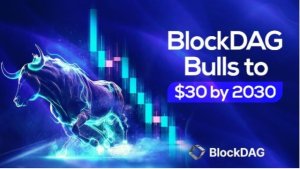Deutsche Bank research indicates robo-advisors could manage €25-35bn in 2025
The current robo-clients are largely male and middle-aged, the research piece says.

Robo-advisors, which primarily invest in ETFs, have seen the number of their clients and assets under management grow in Germany, according to a Deutsche Bank research article published today.
Thanks to the fintech advancements, the established financial advisory services might gradually change in Germany, according to the researchers. At present, there are several digital platforms, or in short, robo-advisors, that offer online advisory services to retail clients. After mergers and acquisitions, the number of robo-advisors in Germany stood at around 25 in 2019.
With more established players entering the market, AuM of robo-advisors surged to around €4 billion in 2019, up from €0.3 billion in 2016. If the German ETF market keeps expanding roughly at its average pace seen since 2014, German robo-advisors will probably manage about €25-35 billion by 2025, the researchers forecast.
Robo-advisors typically invest in ETFs and if they grow further, this will most likely reduce retail clients’ reliance on traditional financial advisors which favour actively managed funds. Moreover, robo-advisors might fill the advice gap for those who invest smaller sums in capital markets but have limited market knowledge. Hence, an expanding retail client base of robo-advisors, among other drivers, may increase ETF investments in Germany in the years to come.
The researchers also take a look at robo-advisors’ clients. The observation period is 2019. Accounting for 80% of the total, the overrepresentation of male robo-clients is striking. In comparison, traditional asset management clients are evenly balanced with 50% women and 50% men. The overrepresentation of male clients in robo-advice might refer to earlier robo-clients’ willingness to take more risk.
Concerning age, the data shows that the share of robo-clients increases initially, reaches its peak with the 45- to 54-year-olds and decreases later on. Limited participation of tech-affine younger individuals is attributed to the limited savings they possess.
Another important client characteristic is monthly income. In the researchers’ dataset, the median income of a robo-advisor client is almost three times that of a typical bank client. In general, low-income individuals use financial advisory services less than high-income individuals with robo-advisors not being an exception.
All in all, the average robo-advisor client is male, middle-aged and has a high income. Growth in robo-advisory to date has been driven by a specific sub-sample which is not representative of the population overall or the asset management landscape. That said, robo-advice has strong growth potential, thanks to i) its scalability, and ii) the fact that its pioneer clients are digital natives who will probably dominate the society in the future.
The research also examines how robo-clients access information. About 37% of them prefer to receive information on their finances in real-time through e-mails, push-notifications etc. They value the speed and ease-of-use over traditional forms of client contact. Banks that use social networks, blogs, video-sharing as well as websites and e-mails to share information have a comparative advantage in attracting these clients.
The current robo-clients are a rather small subset of potential clients. In terms of outlook, participation of female and low-income clients is expected to grow in the coming years and, together with intergenerational wealth transfers from inheritance and gifts, etc., enlarge the robo-advisor client base strongly.









